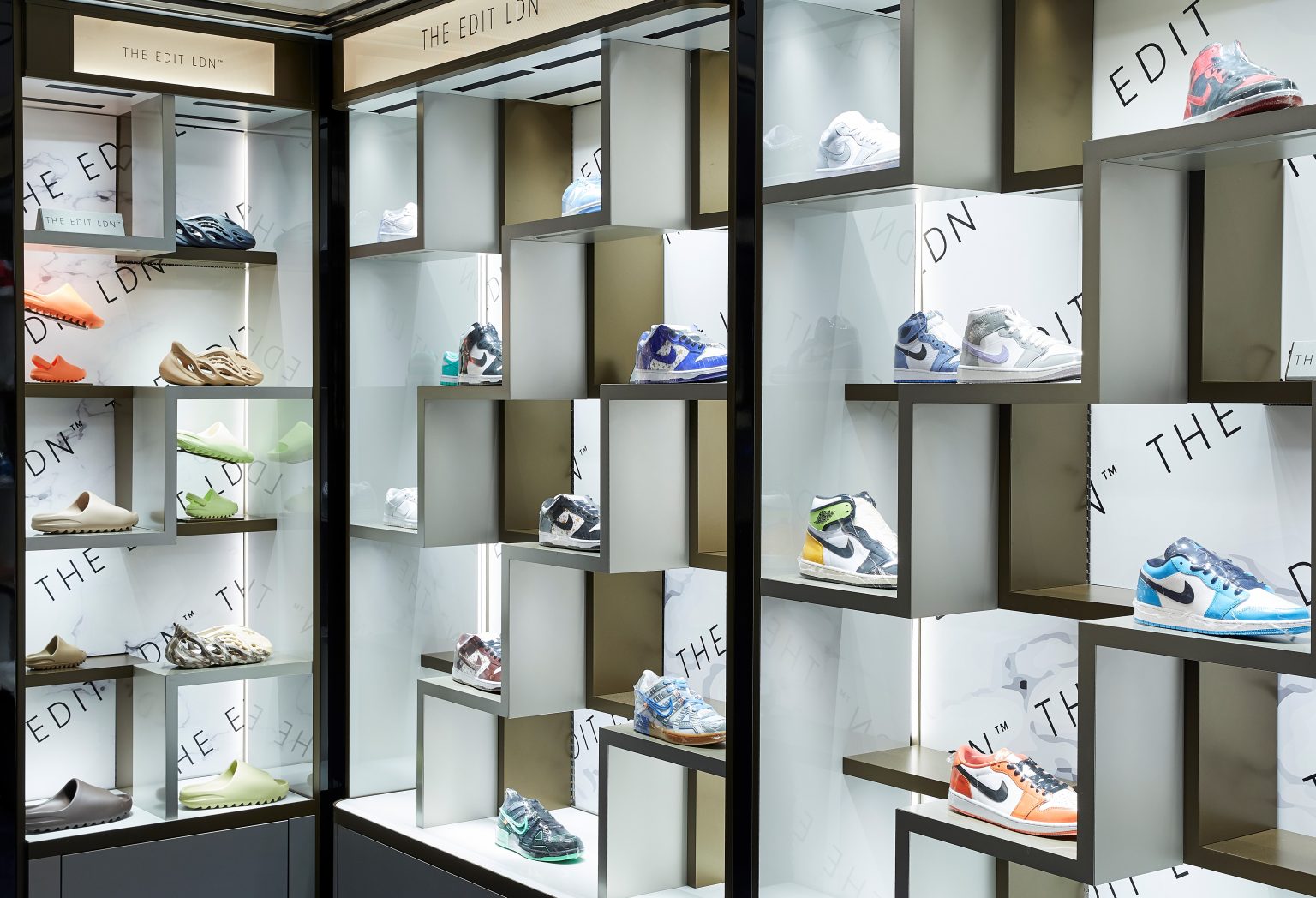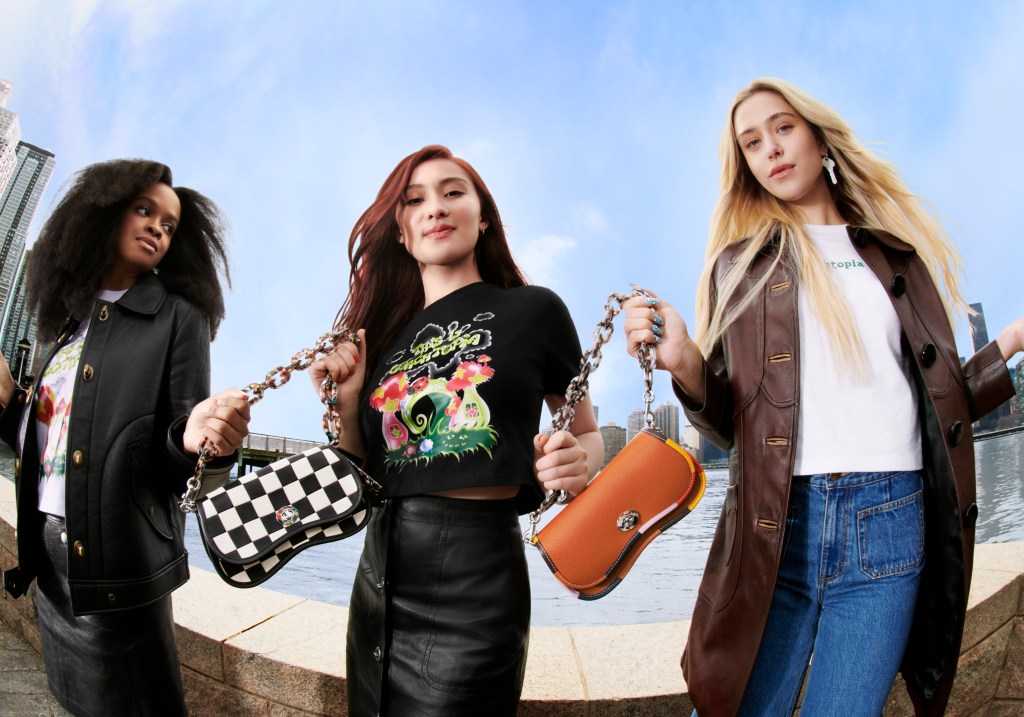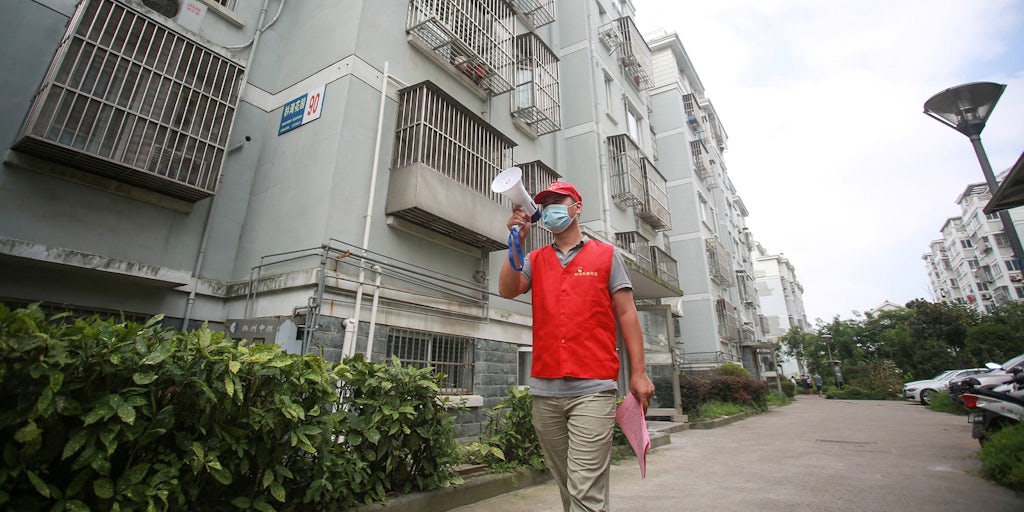In-store experiences are driving luxury sneaker customer loyalty
The sneaker bubble is rumored to have popped — and yet, in-store luxury experiences are a hook for new customers. For its part, London-based sneaker marketplace The Edit LDN secured $4.8 million in funding on January 17, which it plans to use to expand its international footprint. According to founder Moses Rashid, a physical presence and IRL activations enhance sneakerhead loyalty.
According to January data from Euromonitor, global sneaker sales in 2022 totaled $152.4 billion, which was a small 2.7% increase from the prior year. Since the sneaker boom of 2021, when there was a 19.5% spike in sales, market growth has slowed — and it’s not expected to bounce back in 2023, according to analyst projections.
However, not all sales are slowing. For 3-year-old The Edit LDN, sales are up, with revenue growing 500% every year since 2020, reaching $12 million in 2022. With its new funding, it has plans to expand internationally, into Amsterdam, the MENA region and the U.S. Its physical retail experience to date includes successful shop-in-shops in Harrods, London and Galeries Lafayette in Doha, the latter of which the company opened just before the World Cup in December.
“Truthfully, we’re probably down a bit from where we expected our sales to be in the last couple of months. But we are still seeing these ‘unicorn customers’ who come in and spend £5,000-£6,000 ($6,175-$7,410) on one pair of shoes,” said Rashid. “That’s very much driven by the rarity of the product. Our big [focus] as a digital player is learning how to drive footfall in stores and bringing [that customer] back to us online.”
The Edit LDN has been largely shielded from the sneaker sale fallout through its focus on marketing, cross-channel customer acquisition and an impactful retail presence. The Harrods and Galeries Lafayette shop-in-shops have become a magnet for celebrities, YouTubers and sport stars, including footballer Jesse Lingard and Kylie Jenner. The company has leaned into opportunities to make a statement in physical channels. For example, while at Harrods, it flew a drone through the store and hosted an exhibition of football player Erling Haaland’s boots, one of three limited pairs in the world. “We’ve had famous soccer players come into the Harrods space,” said Rashid. “People are becoming accustomed to going, ‘OK, if we’re there, we may see some really cool stuff happening.’ So we try to drive engagement that way.” The Edit LDN posts about its celebrity fan visits on its social channels.
“Customers in the middle basket size of £360-£600 are more driven by [elevated] experiences and services. [They look for] engaging in-store touch points, communication and speed,” said Rashid.
According to Paul Simmons, luxury expert and strategy director at Oma Studio, shop-in-shops offer an opportunity for marketplaces to facilitate next-level customer service and differentiate from competitors. “The brand already offers same-day-delivery in London for online purchases, and customer service is where physical luxury retail still trumps e-commerce,” said Simmons. “Store associates that can offer product curation and education, alongside more traditional luxury retail services, which helps draw current and new customers through the doors.”
The company is not the only sneaker retailer focused on establishing an impactful retail presence. Culture Kings, an Australian company selling rare and exclusive sneakers, opened its U.S. flagship in Las Vegas in November. The 1,400-square-foot store includes a space for musical artists, a secret room for VIP’s and a basketball court. Simon Beard, CEO and founder of Culture Kings, said in November. “Our consumers don’t go shopping every weekend, but if you get them in the right state of mind with the store experience, they just come alive,” said Simon Beard. “We design our stores for those moments to happen.”
Rashid said physical retail also helps drive people to The Edit LDN’s e-commerce site. “Even with our growing store footprint, we still anticipate a 60% e-commerce, 40% retail [breakdown], and that’s how we’ll continue to grow the business,” he said. “People like to look and feel luxury products. While the concessions are profitable hubs, they mainly build trust in that respective community and city, and then we build our digital assets around them.”
The idea of e-commerce touch points is important, according to Simmons. As the market slows and marketplaces see less sales from popular styles, differentiation and loyalty will keep them alive. “The shop-in-shops will allow Edit LDN to further build its own brand POV and identity, which can be a challenge for a multi-brand online retailer,” said Simmons. “They can host localized events and PR opportunities to drive buzz and consumer loyalty.”
The Edit LDN takes a hyperlocal approach to its marketing, leveraging in-store customer feedback and first-party data from sales to see what activations are resonating and which products are attracting the most attention. It will apply a similar strategy in its new markets of MENA and the U.S., focusing on education and fast delivery. While its average basket size is about $450, the brand relies on both mid-range and luxury customers for its sales. It plans to tie in-store experiences and celebrity meet-and-greets to its loyalty program, launching in February.





